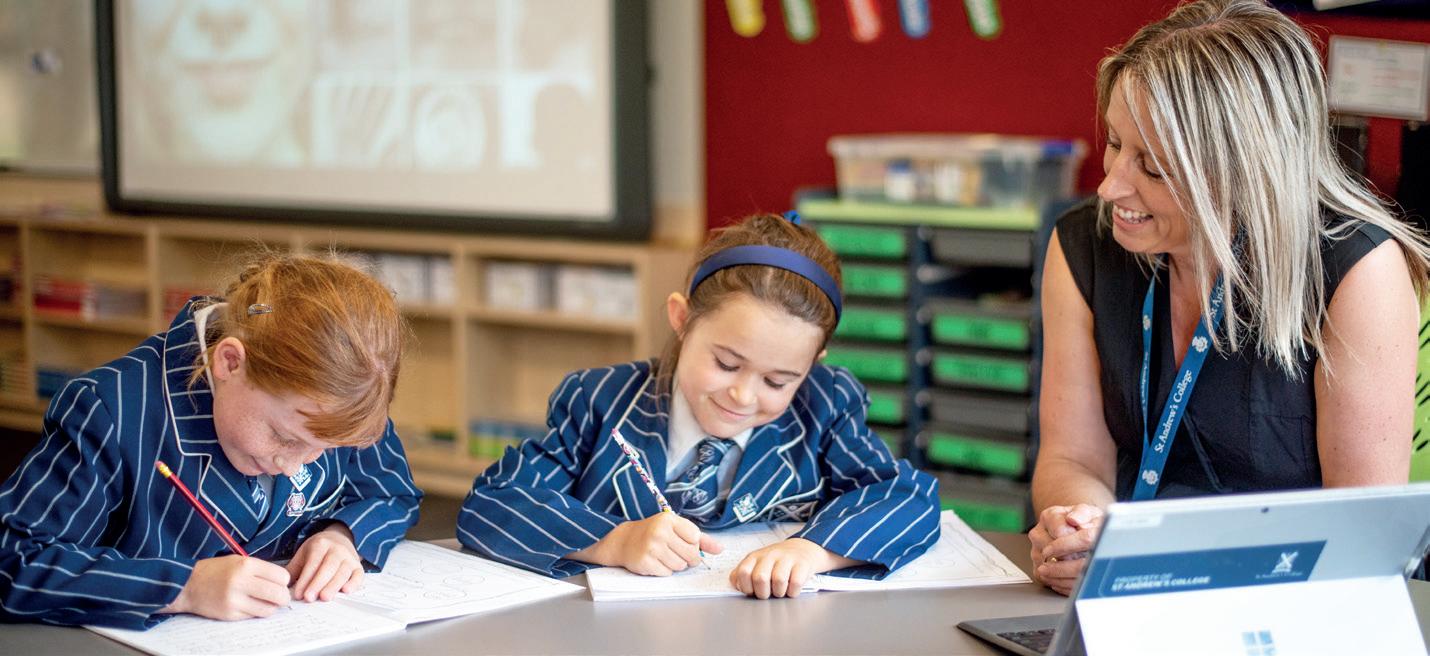
4 minute read
Assessment and Reporting
10 Assessment and Reporting
Assessment is described as the process of gathering, analysing, interpreting, and using information about students’ progress and achievement to improve teaching and learning. Assessment plays a significant part in our education system and should strive to involve all children in knowing how successful they have been in their learning. This is an integral part of developing lifelong learning skills. ASSESSMENT
Advertisement
Teaching and learning in the Preparatory School continues to show many strengths. A considerable part of this is the ability to reflect modern learning pedagogy in teaching as well as through our approach to assessment. As this shift in education continues so has our view of assessment. Visible Learning assessment practices continue to be a focus in the Preparatory School. This is where assessed information is used by teachers to adjust their teaching strategies, and by students to adjust their learning strategies. Assessment, teaching, and learning are inextricably linked, as each informs the other. Students feel involved in the process and can describe where they are at with their learning and what their next steps are. Quality and timely feedback from teacher to student, student to teacher, and student to student are an important part of this. Quality conversations and feedback formed part of the appraisal process for classroom teachers in 2019 and will continue to be an area to grow in 2020.
Areas of improvement in 2019 have included: • consistent approach to using the same curriculum levels and language as the Secondary School to provide consistency; • modification to feedback given to students to be more meaningful and timelier; • clarification with students around understanding feedback; • unpacking assessment information with students to develop greater understanding; • developing teacher, peer, and self-assessment (feedback) of student work.
E-ASSESSMENT AND ONLINE TESTING
e-asTTle continues to be our main tool for assessing Years 4–8 students in reading and writing. As well as being used for whole school cohort testing, individual teachers also used the shorter tests with small groups to inform next steps in the learning process. In 2019, minor changes were made to the test structure and length to better reflect current pedagogy around testing. e-asTTle provided information to teachers, students, and parents about levels of achievement relative to the Curriculum achievement outcomes for Levels 2 to 6. Staff found e-asTTle to be a great tool for helping students understand their progress, and a useful way to involve parents in discussions about their children’s progress. Classes also used the e-asTTle writing rubric to self-assess their writing as part of class work.
get it wrong, they’re given an easier one. Adaptive technology means everyone gets the test which is right for them, from students at the lower levels to those who need additional challenge.
In Mathematics, teachers used PAT Maths online to assess students learning at both the beginning and end of year. Several staff also trialled the use of the PAT Adaptive Mathematics test with groups of students. Adaptive testing accurately assesses a student during the test by continuously adapting the assessment to give them questions which best fit their overall level of achievement. The student is given an initial question and if they get it right, they’re given a harder one, or if they REPORTING TO PARENTS
The use of the Community Portal as the means to view reports was continued in 2019 and is now the accepted means for viewing and comparing student reports over time. Students received reports comprising of: • a summary of initial testing and Curriculum Level placement (Term 1); • individual next learning steps for key subject areas (Term 1);
• individual Key Competency related goals (Term 1); • specialist staff assessment of skills, knowledge, and behaviour during specialist lessons (Terms 2 and 4); • teacher comment around Key Competencies (Terms 2 and 4); • a summary of student progress towards goals and further testing results (Terms 2 and 4).

STUDENT PORTFOLIOS AND E-PORTFOLIOS
Student portfolios are a valued and integral part of the children’s learning and achievement, they provide a format for students to record their work, goals, and achievements, reflect on their learning, and share their learning with a wider audience.
Parents were able to access results and comments in a timely manner and discuss with teachers and students at learning conferences. Learning conferences continued to provide another forum for teachers, students, and parents to discuss learning and set goals for the future. The Preparatory School has an open-door policy and has continued to encourage parents to contact staff whenever they feel a need. For students in the Junior and Middle Syndicates of the school the portfolio continued to be digital in 2019 using the online platform Seesaw. Students in Year 7 also began using this online tool to share learning with parents. Seesaw allows teachers and students to upload current examples of work, and for parents and family to view and comment. In 2020, the final step in transition to using Seesaw will be completed when Year 8 moves to using this platform.






